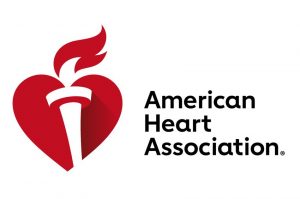 The American Heart Association (AHA) has released its annual update on heart disease and stroke statistics in January 2024. This report provides crucial insights into the state of cardiovascular health in the United States. The 2024 update sheds light on the latest trends, risk factors, and advancements in the prevention and treatment of heart disease and stroke. Here are some of the key highlights from the report:
The American Heart Association (AHA) has released its annual update on heart disease and stroke statistics in January 2024. This report provides crucial insights into the state of cardiovascular health in the United States. The 2024 update sheds light on the latest trends, risk factors, and advancements in the prevention and treatment of heart disease and stroke. Here are some of the key highlights from the report:
Prevalence and Mortality Rates
- Cardiovascular Disease (CVD): CVD remains the leading cause of death globally. In the United States, it accounts for more than 800,000 deaths annually, representing 1 in every 3 deaths. This emphasizes the critical need for continued research and preventive measures.
- Heart Disease: The prevalence of heart disease continues to be a major concern. Approximately 126.9 million Americans, or nearly 49% of the adult population, live with various forms of the condition. Efforts to reduce risk factors and improve treatment options are ongoing.
- Stroke: Stroke remains a leading cause of disability and death. Its the fifth leading cause of death in the United States with nearly 150,000 deaths each year. The report emphasizes the importance of early detection and intervention to improve outcomes for stroke patients.
Risk Factors
- Hypertension: High blood pressure is a major risk factor for both heart disease and stroke. About 47% of adults in the US have hypertension. 24% have it under control, highlighting the need for increased awareness and management.
- Obesity: The obesity epidemic continues to be a significant contributor to cardiovascular risk, with nearly 42% of the US adult population considered obese. Addressing obesity through lifestyle changes and medical interventions is crucial for reducing the burden of heart disease and stroke.
- Smoking: Tobacco use remains a leading preventable cause of CVD. Around 12.5% of adults in the US are current smokers. Smoking is responsible for about 1 in every 5 deaths from heart disease.
- Diabetes: Approximately 10.5% of the US population has diabetes, with a significant portion being at risk of developing cardiovascular complications. Managing blood sugar levels and reducing other risk factors is essential for individuals with diabetes.
Prevention and Treatment
- Lifestyle Changes: The report emphasizes the importance of a healthy lifestyle in preventing heart disease and stroke. This includes a balanced diet, regular physical activity, maintaining a healthy weight, and avoiding tobacco and excessive alcohol consumption. However, only 24% of adults meet the recommended guidelines for aerobic and muscle-strengthening activities.
- Medical Advances: New medical treatments and technologies are helping to improve the outlook for heart disease and stroke. This includes innovations in medications, surgical techniques, and rehabilitation.
- Public Health Initiatives: The AHA continues to advocate for public health policies and initiatives that promote cardiovascular health. For example, access to healthcare, increase awareness of heart disease and stroke risk factors, and encourage heart-healthy behaviors.
- Cholesterol Management: About 55% of adults with high LDL cholesterol are receiving treatment. Only 30% having it under control. To merge the gap, there is a need to enhance our management tactics.
Conclusion
The AHA Heart and Stroke Statistics 2024 Update provides a comprehensive overview of cardiovascular health in the United States. The report addresses the ongoing challenges in fighting heart disease and stroke, despite some progress in certain areas. By understanding these trends and risks, patients and healthcare workers can work together to reduce the impact of the life-threatening conditions.
Sources
AHA Journals. “2024 Heart Disease and Stroke Statistics: A Report of US and Global Data From the American Heart Association.” https://www.ahajournals.org. 24 January 2024.
Last updated February 22nd, 2024






